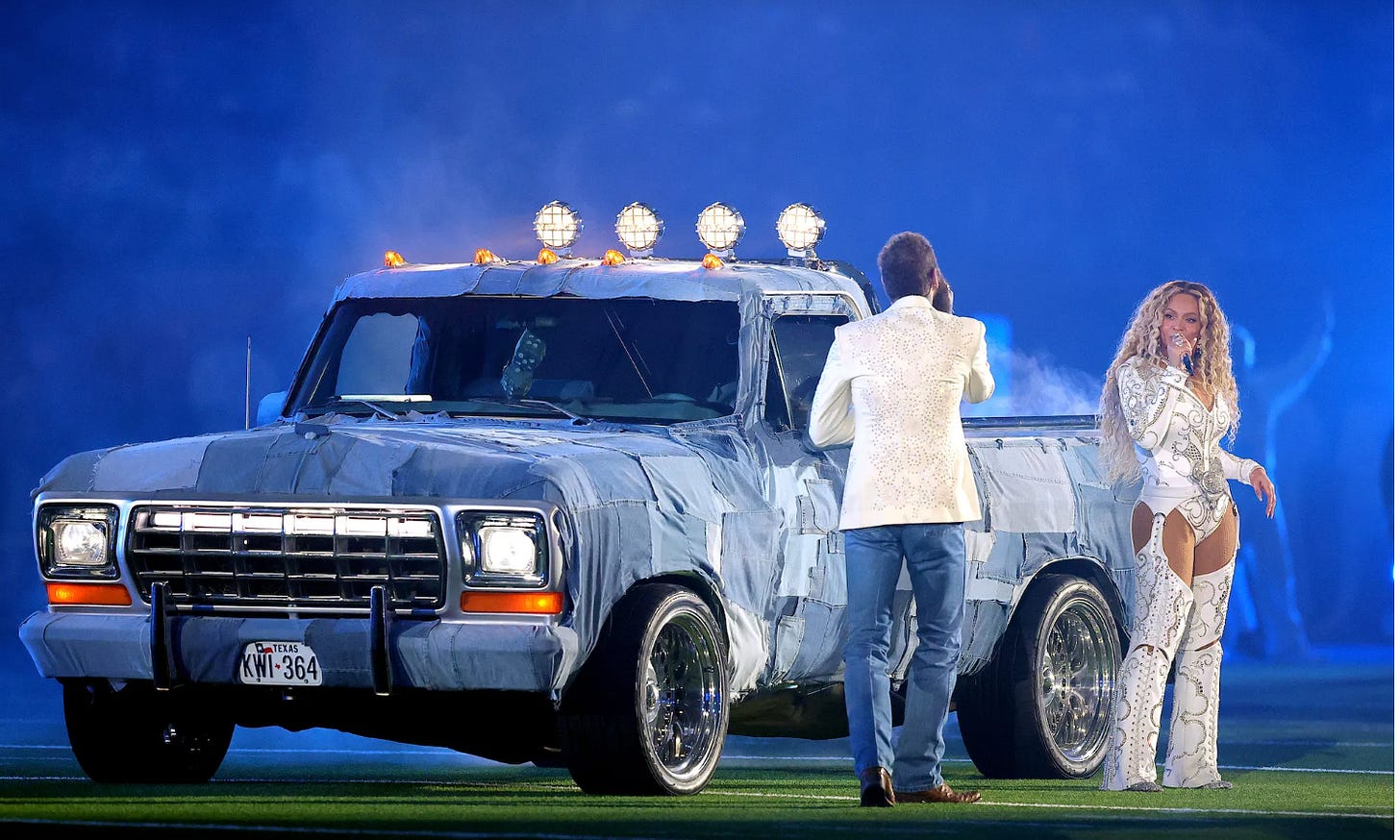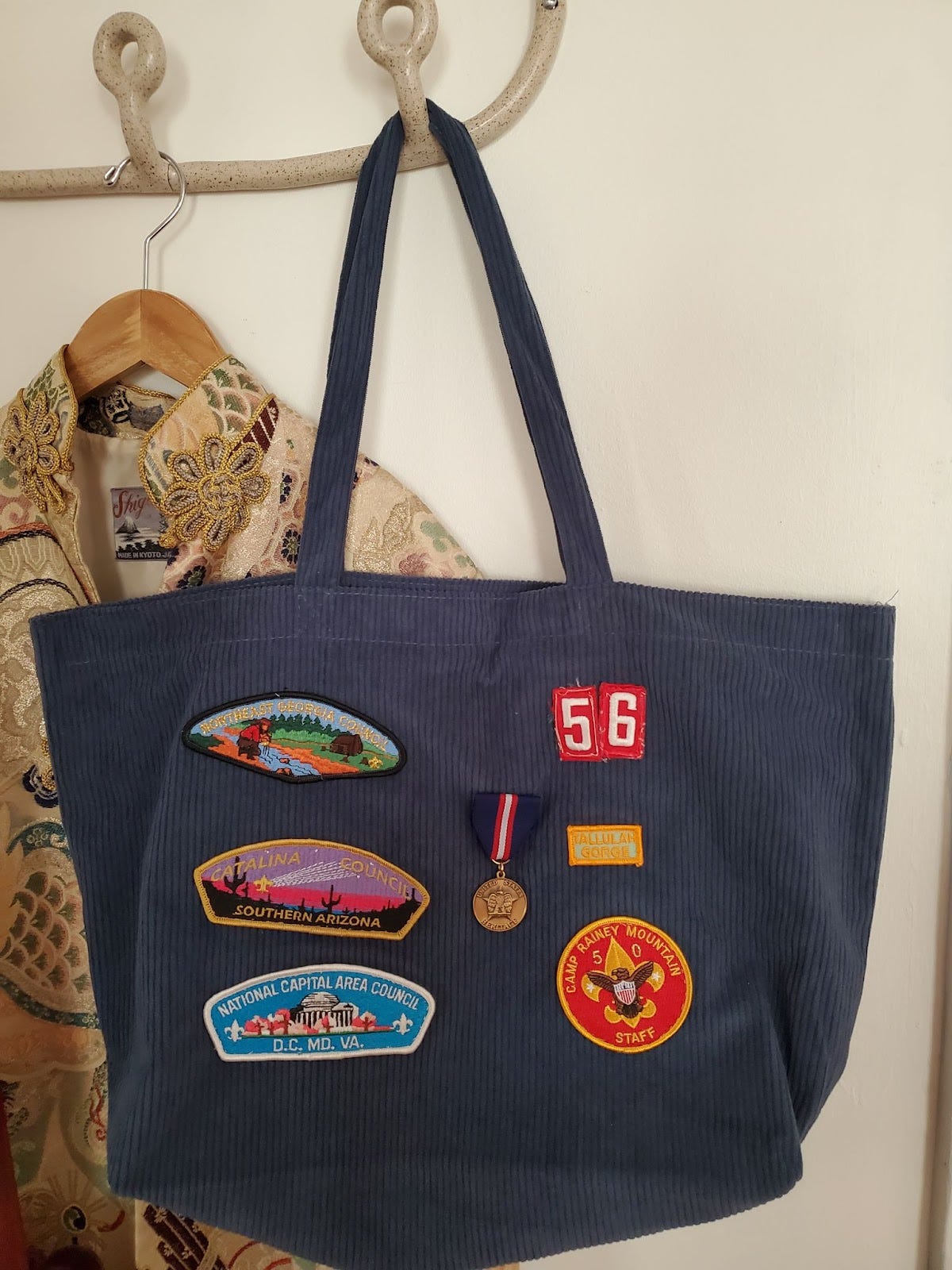Welcome to Loose Buttons, my mind palace on fashion and home-related stuff.
As this is my first post (and a whole new year), I’m not totally sure where this will go, but in the spirit of doing things, here’s some words!
The biggest style moment for me in the last month came from an unlikely source – the NFL.
And it wasn’t Beyonce or the performers that stood out during the Christmas bowl game (though they all looked amazing!)
It was a freakin’ truck.
The Levi’s-covered truck at the Beyonce Bowl had my literal mouth agape:

Which got me thinking a lot about patchwork and why it’s been a sticky trend for the last decade. Patchwork, or the art of repurposing fabrics into a new design – has long been a home staple in quilts and textiles. It’s a sustainable way to repurpose fabrics, inspire creativity and community, and they have a long history as part of Americana (see this history of underground railroad quilts, Gee’s Bend legacy and quilting as queer community-building). And that’s not even getting into international patchwork styles like Japanese boro or Indian kantha, which have their own histories.
But patchwork and quilting have gone through a modern renaissance by being repurposed as clothing – they started as luxury fashion but became more accessible during the pandemic as athleisure and pajamas became more acceptable work clothing. While there’s been some controversy among crafters about whether it’s okay to cut up quilts for clothing, that hasn’t stopped a desire for them. There’s something quite beautiful about tangible history in these fabrics. They feel cozy, safe, traditional, womb-like – all mental balms in a collective emergency. And in a world that champions efficiency and polyester, these fabrics in particular harken back to slow crafting, repurposing and DIY culture.
But why do they endure as a style? Beyond the sustainability aspect, I think it has something to do with uncertainty around wider geopolitical and economic forces, even if that’s not top of mind during a quilt jacket purchase. While Vogue Business thinks trends might be over in 2025, other sources point to accessibility and laziness being part of the consumer mindset. And with bohemian style having resurgences during political volatility – there’s all the more reason to believe patchwork will still be a go-to.
But I do think patchwork has become less geometric as old designs get reshaped into something more abstract, upending expectations. Maybe uncertainty feeds into experimenting with visual surrealism? Some things that have caught my eye:

Some further reading!
Radical history of quilting | Smithsonian
Bodeworld | The Cut
It’s time to rethink patchwork | House & Garden
Crochet (about its endurance as a handicraft) | Ball State Daily
Visible mending | ABC Chicago
Moving on …
I decided to end 2024 with a craft, as I totally believe it’s good luck to spend the last few hours of the year doing the activity you want to do more in the new year. And for me, it’s making things – and a recent gift with purchase inspired me to do so.
I recently received this free Sezane tote when I ordered some trousers. I normally don’t go for the color blue or corduroy, but something about its material just screamed, please Frankenstein me!
So I finally broke into my stash of Boy Scout patches. My entire family grew up in Scouting, and I spent a couple summers working at a Scout camp. (note: despite the BSA’s current scandals, my time in it was pleasant but unremarkable. I am no longer involved in the org because some experiences that were joyful in childhood are just better left as nostalgia. Plus, I realize as an adult, I do not like camping!).
Maybe one day I will break down some of the endearing parts of camp aesthetics, but for now, here’s some visual evidence of me rocking the uniform:
One of the most appealing aspects of being a Scout camp counselor was the ephemera you could collect from just being involved. Every activity could be commemorated. Climbed a mountain? Here’s a patch. Learned a skill? Here’s a patch.
As a sentimental person, I find this very charming. So in my time at camp, I accumulated many patches either by earning them or trading for them in patch swaps on Saturdays.
I’ve held onto these patches for ~20 years or so, and I’ve flirted with the idea of putting them on a jacket, tote bag or blanket, but nothing felt like the right canvas. Til now.
I think it took a couple hours (I’m hand-sewing here) but I like the final output. I ended up adding a basic medal I got because I like the idea of adding another textural element (in this case, metal) to add visual interest. Even though it turned out slightly crooked, I love it.
Some final thoughts - I recently watched this video about creating things and how the initial thing you do will be your ‘first pancake’ – slightly wonky and misshapen, but it allows you to perfect the ones that come after. That’s how I’m thinking about this first post, this first craft – hopefully the initial doing precipitates more doing.
To first pancakes and beyond,
JoAnn







